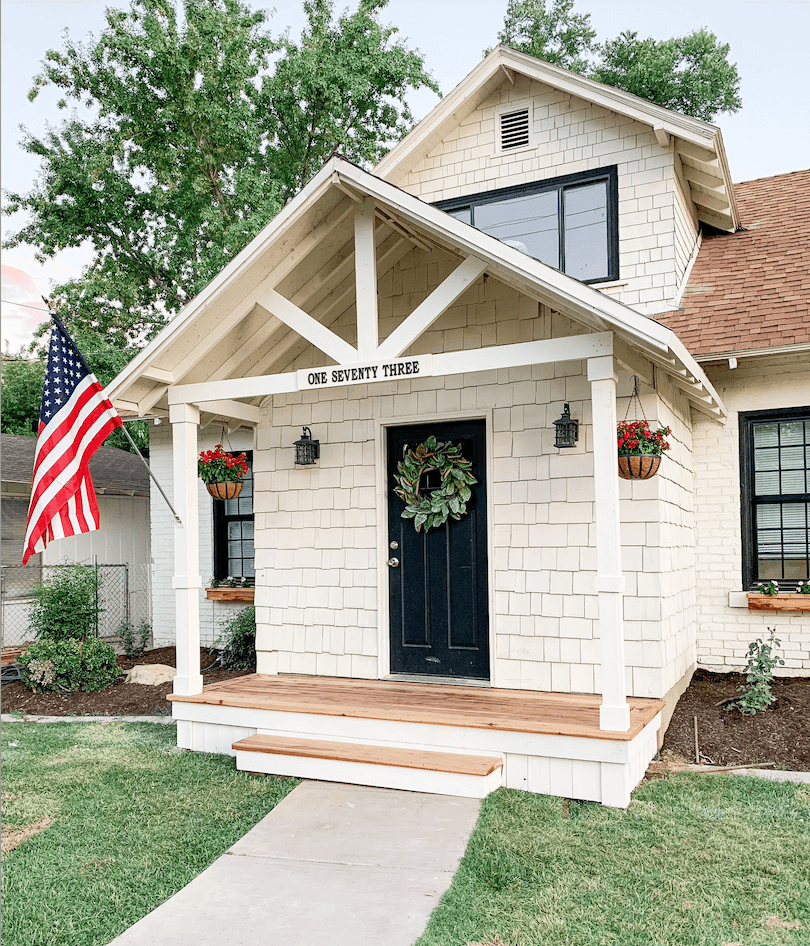Want to add a front porch to an existing house? My DIY White Front Porch tutorial shows you how to save money by installing it yourself.
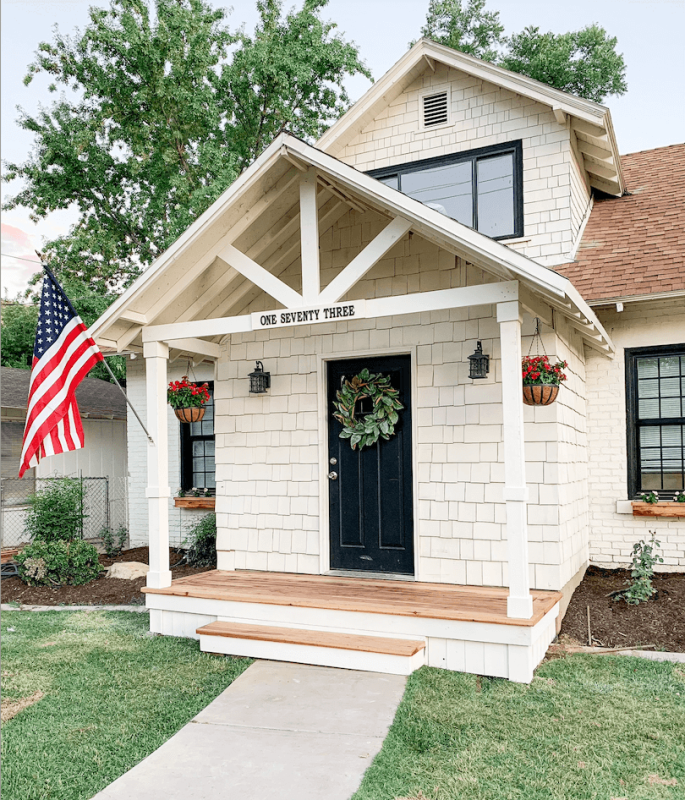
The summer weather in Utah is amazing, and my girls love to play outside. We live on a safe and friendly street, but I still like to keep an eye on them since they’re so little. I needed somewhere shady to hang out while we’re all outside and building a simple DIY white front porch seemed easier than just sitting underneath an umbrella. Wait, that’s not right. Building a simple DIY white front porch seemed CUTER than just sitting underneath an umbrella. There you go.
**This post includes affiliate links. If you purchase from these links, I may get a small commission from the seller. But the great thing is, this doesn’t cost you any extra money! **
SUPPLIES
Lumber
- 2 – 4 in. x 4 in. x 12 ft. Pressure-Treated Pine Post
- 1 – 2 in. x 6 in. x 12 ft. Pressure-Treated Yellow Pine
- 5 – 2 in. x 6 in. x 8 ft. Pressure-Treated Yellow Pine
- 3 – 2 in. x 6 in. x 12 ft. Untreated Redwood
Power Tools
Misc Supplies
- 3/8 in. Carbide Drill Bit for Concrete
- Quikrete Concrete Mix
- 2 in. Framing Nails
- Masonry Anchors
- Level
- Carpenter Square
- 3″ Star Bit Wood Screws
- 2 in. x 6 in. Joist Hanger
- Ratchet Set
- Hammer
- Tape Measure
DIY White Front Porch Design Plans
Before the project started, I checked to see if a permit was needed. Since this is a simple front porch addition, I was cleared to build. Make sure you check with your local permit office before you break ground.
The architectural style of my house leans towards historic, and the exterior walls are shingled. I didn’t want the porch to compete with with house, so I kept the porch design simple and cute. I don’t have Revit (or even know how to use it), so I pulled out the graph paper and it was a great blueprint substitute.
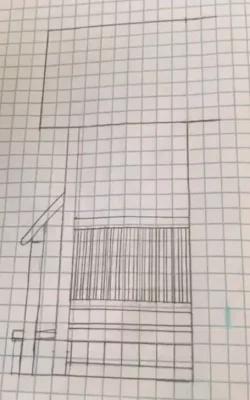
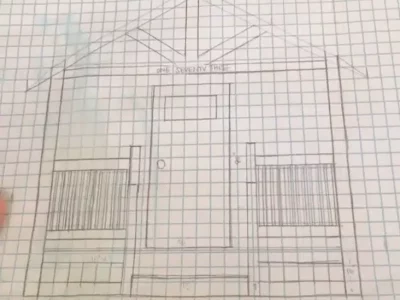
Creating a Foundation to Add a Porch to an Existing House
My house is just a hair wider than 12 feet, so we attached a 2 x 6 x 12 pressure treated ledger board to the front of the house. This ledger board is what will connect my porch to my house.
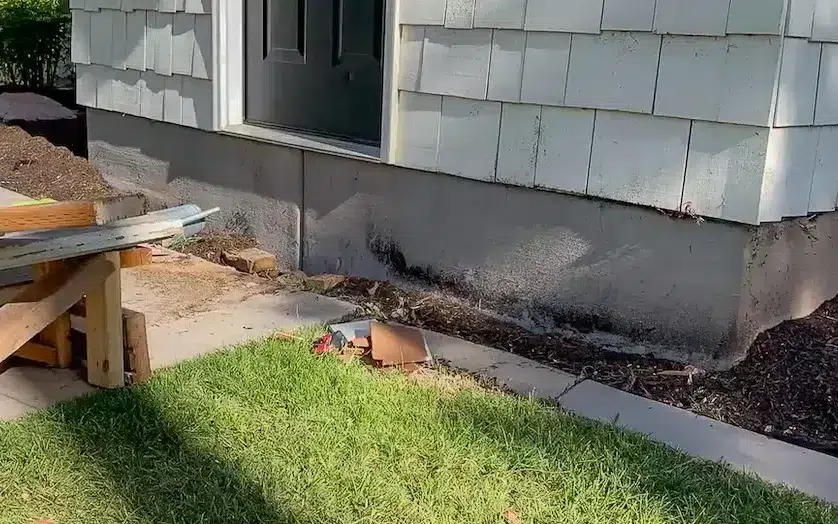
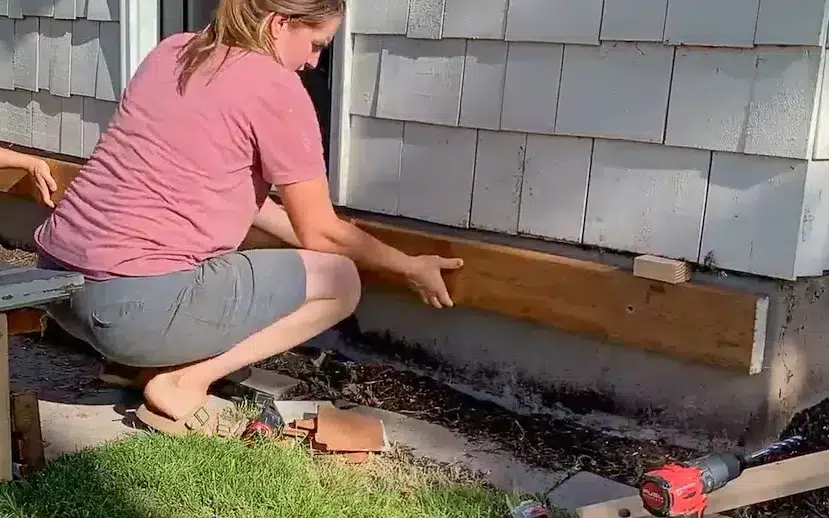
First step is to drill 5 equally spaced holes into the ledger board. I used a 3/8 carbide masonry bit and a drill on the hammer setting.
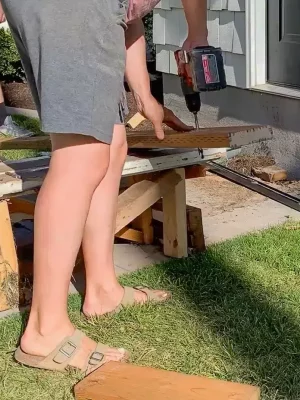
The drop from the threshold to a deck is supposed to be between 1 1/2 – 3 in. My deck boards were already 1 1/2 in. tall, but they needed to fit under the threshold of my door and on top of the ledger board. A scrap piece of deck wood came in handy as a spacer.
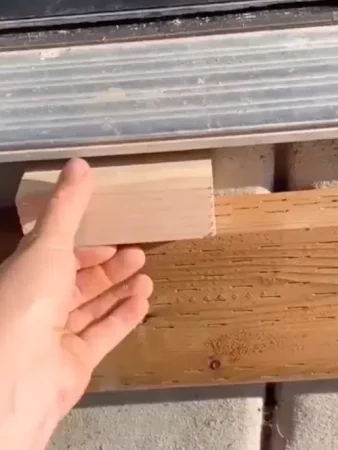
From this point forward, it helps to be a perfectionist. The success of this project depends on exactness, so my advice is to check and recheck that everything is level when you’re adding a piece of wood to your porch frame.
When my ledger board was exactly level and in place, I pencil marked onto the concrete through the five holes.
I used the same bit to drill pilot holes into the concrete where I had made the pencil marks. Then I hammered masonry anchors through the holes on each edge of the ledger board, just enough to get the anchor ends to poke through the other side.
I lined up the two masonry anchors into the pre-drilled holes, hammered the board to the concrete, and then hammered masonry anchors through the remaining holes. Finishing them off with a ratchet helped tighten the board up to the house.
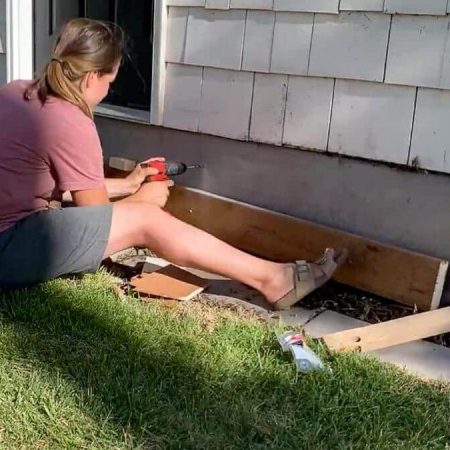
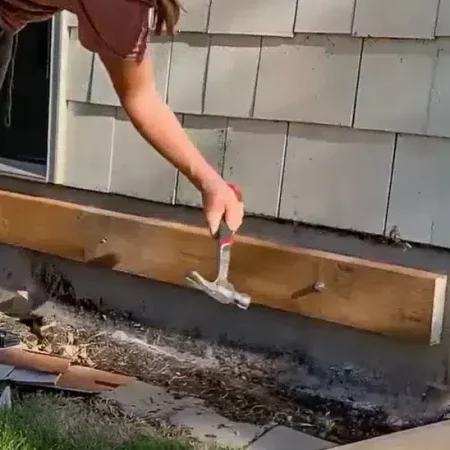
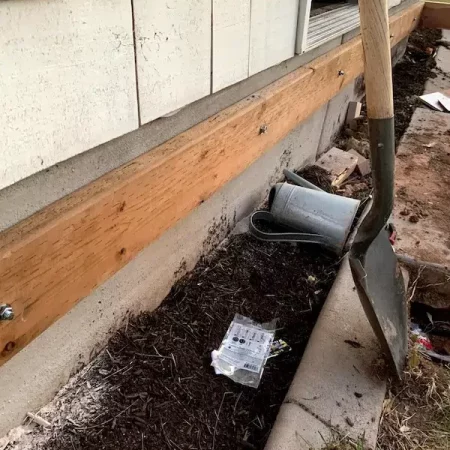
Prepping the Lawn for the Deck Posts
I had some sprinkler location issues, so this is your warning to check for drip line, sprinkler heads, etc. that your deck could end up covering that may need to be relocated.
To correctly position the posts, we used the string method to square stakes in the corners where the posts would go. They were set exactly 41.5 inches from the front of the house, directly in line with the edge of the ledger board.

Next, I sprayed a 12 in. diameter circle around the stakes to mark where to dig an 18 in. deep hole. Yes, those are both of my unprotected feet in sandals standing on the top of the shovel. 9 out of 10 people also would not have gone to change their shoes. I looked it up.
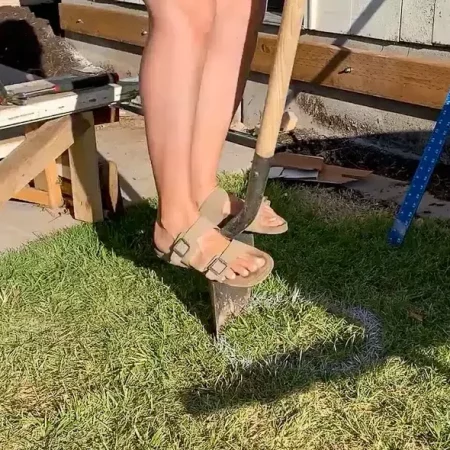
Then I ran into a problem that has nothing to do with my exposed toes. I uncovered and almost hit a water pipe exactly where I wanted to pour concrete, so we rerouted the water line.
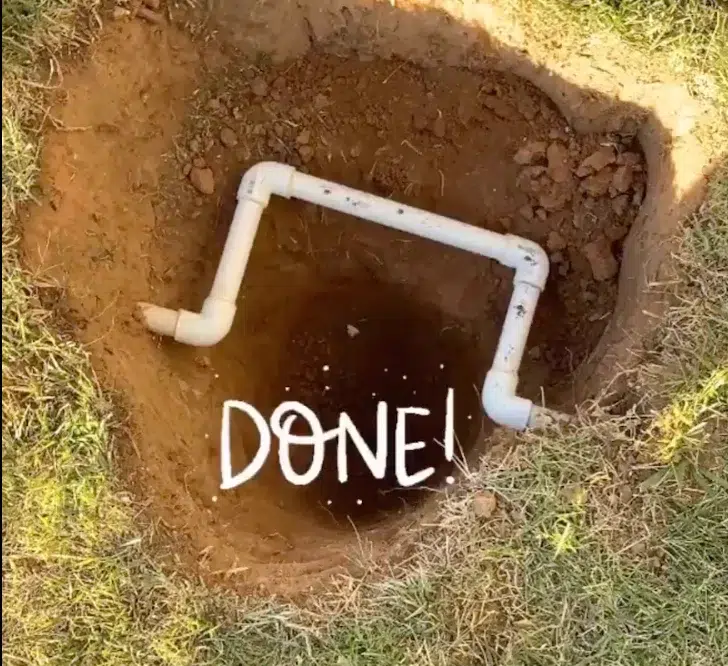
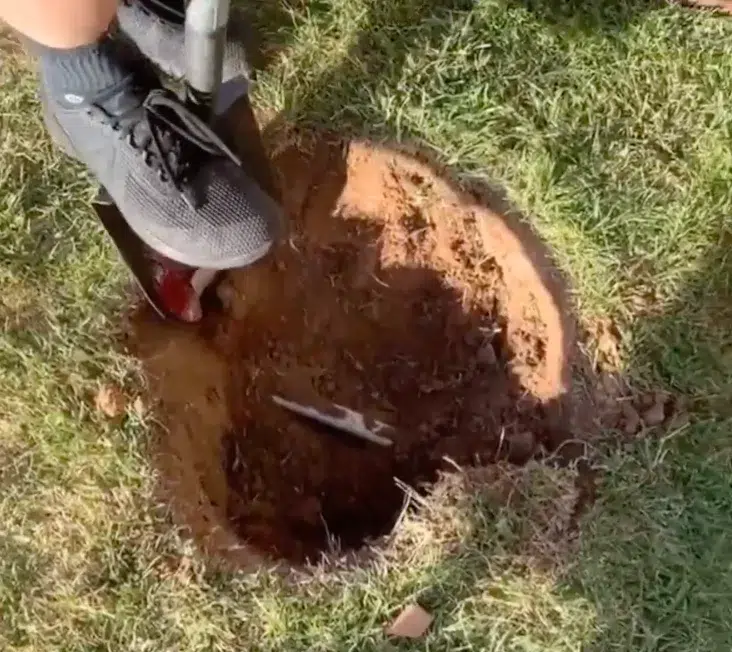
I checked to make sure we had hit our 18 inches goal, and we did!
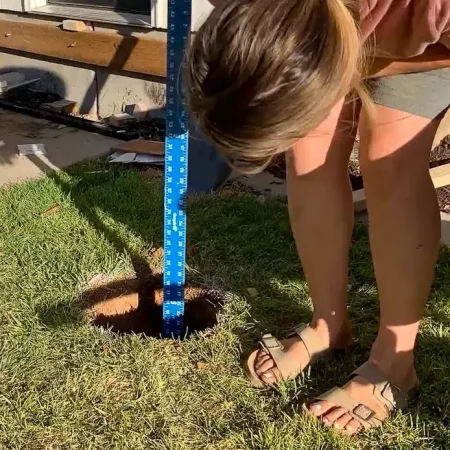
Building the Deck Foundation for the Front Porch
Next step was to connect rim joists to the posts and ledger board. I chose to use redwood because it’s naturally rot resistant, and since these rim joists would be seen, redwood is attractive enough to be left alone.
The posts were set in the holes, and I measured and cut one redwood board at a time. This part is easy-ish but requires accurate measurements and perfectly level boards.
It was helpful to predrill several 3 in. wood screws into the edge of the redwood so that when it came time to commit to a placement, I wasn’t fumbling around trying to position the screws. Just don’t drill them all the way through the wood.
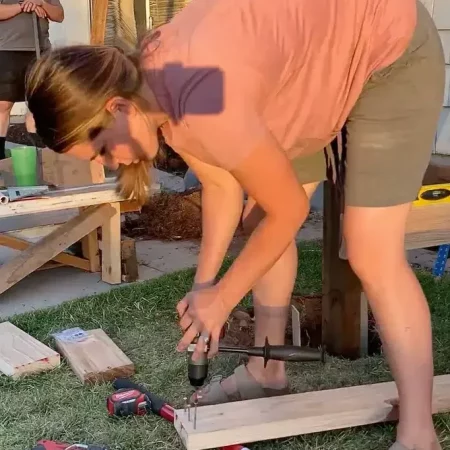
I needed help to hold the post steady and level while I finished screwing the redwood into the ledger board, the posts, and to each other.
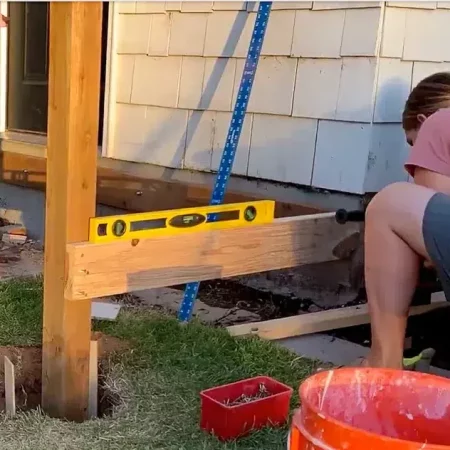
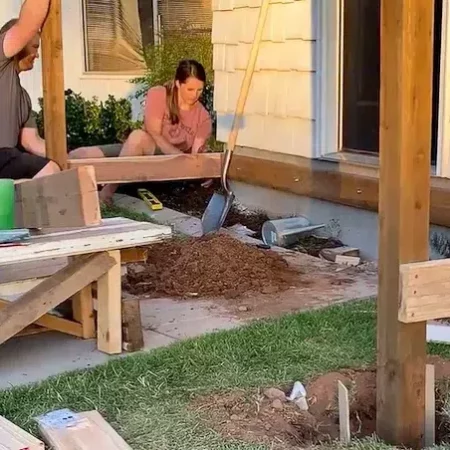
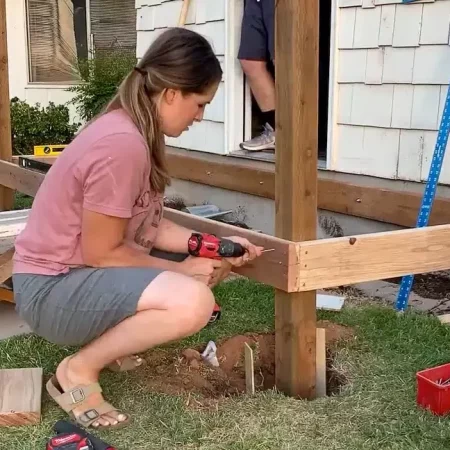
When I was finished, the framing was level up, down, and side to side. Basically, every which way imaginable.
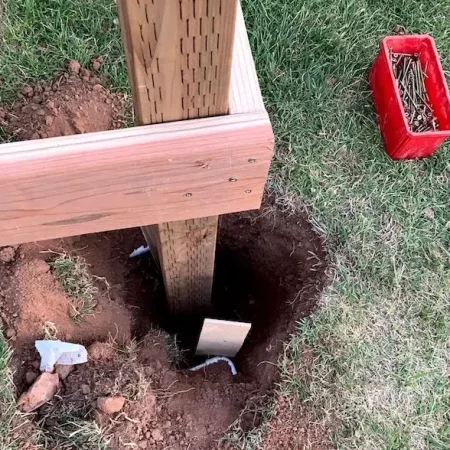
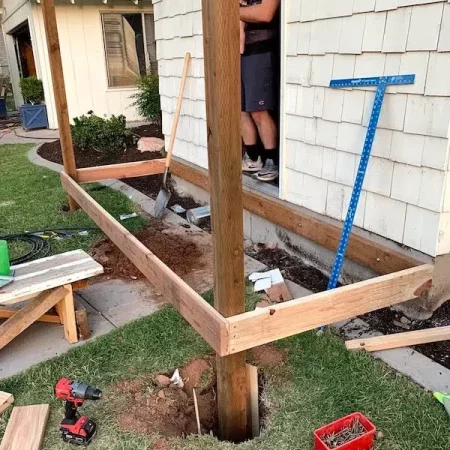
Stabilizing the Front Porch Posts with Concrete
Next up is to create some stability. We mixed some Quikrete concrete mix with water until it was a pancake batter consistency and poured it in the holes to set overnight. As we poured, we continued to check the rim joists and posts to make sure nothing had been knocked out of square.
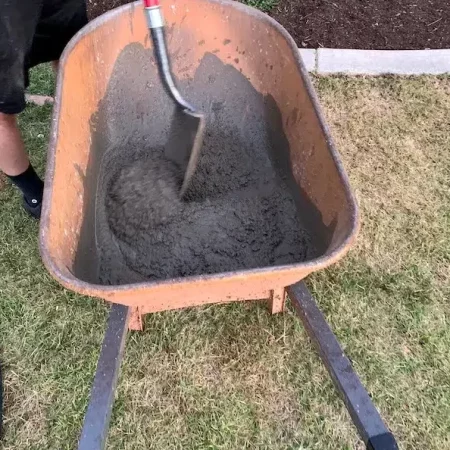
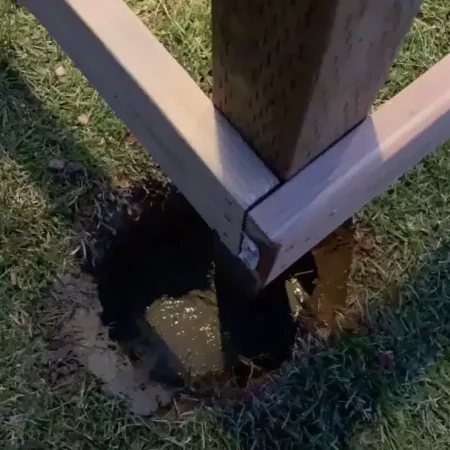
Adding Support Joists for the Wooden Deck
Now that we had some stability, we needed to add the support. My deck would be 12 feet wide, and without support joists, it would feel like you’re walking on a wooden trampoline. I used 2 in. x 6 in. pressure treated pine to create joists that would sit tightly inside the frame.
After I measured the space inside the frame, I used my speed square and circular saw to cut the board.



I put the board inside the frame and butted it up against the post. I “toe-nailed” the joist to the post and ledger board. Toe-nailing is just a fancy/weird way to say I shot the nails in at a diagonal. The nails kept the joist in place until I came back later to add the joist hangers.
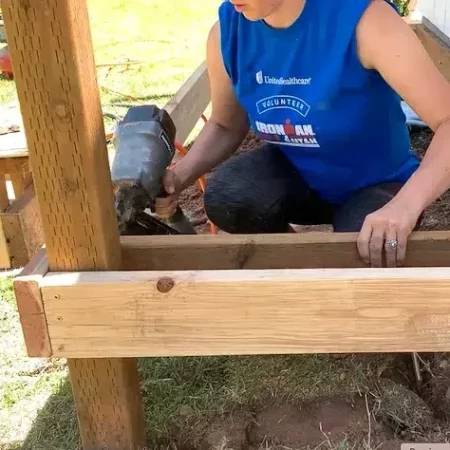
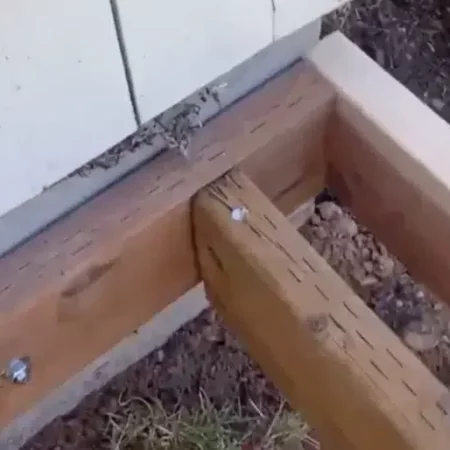
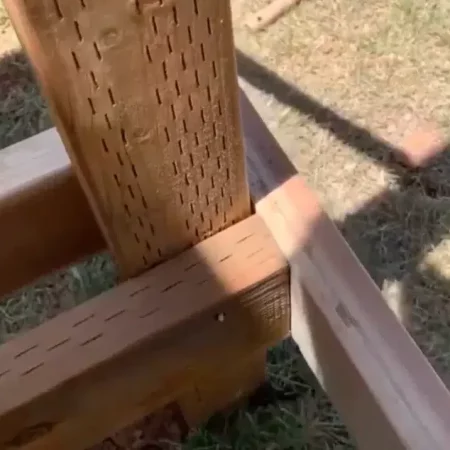
Next, I pulled my tape measure across the ledger board to layout the spacing. Joists are typically hung every 16 inches “on-center”. That means that the measurement’s starting point is the center of that first joist. Every 16 inches from that center, I made a mark on the ledger board. I repeated the process on the rim joist opposite the ledger board.
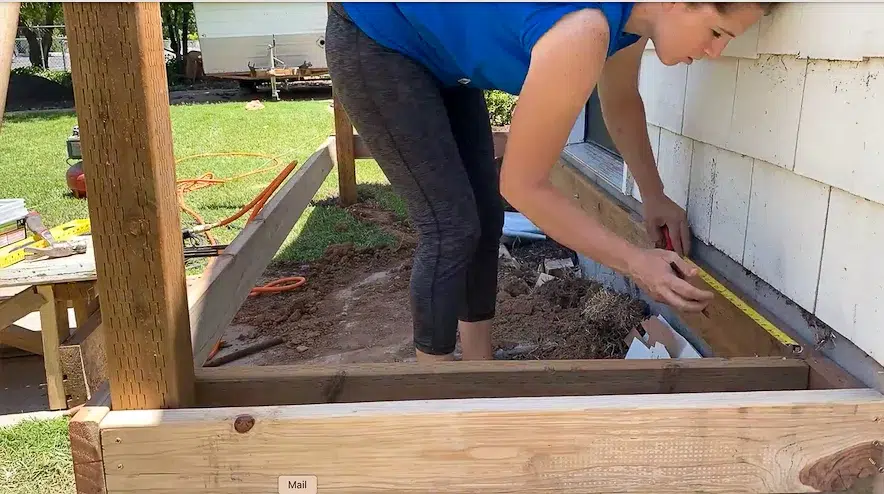
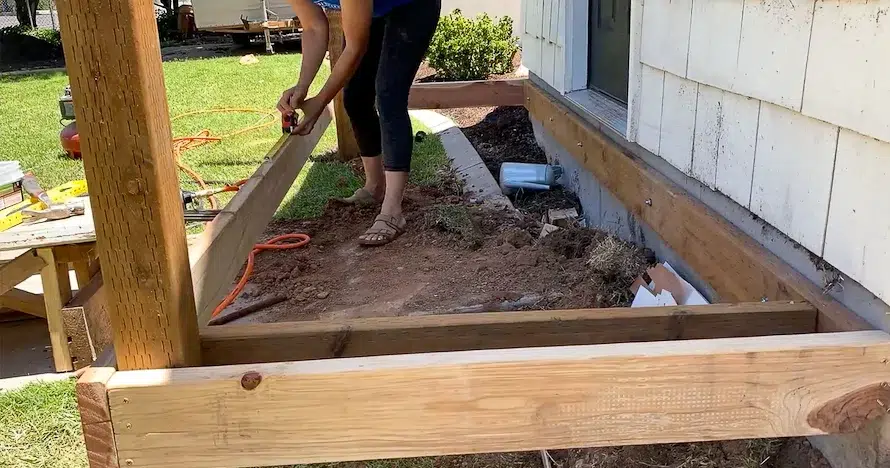
After the perimeter boards were marked, I nailed the joists inside the frame, making sure that the center of the joist was at that mark. I used the same toe-nail method until every joist was in place.
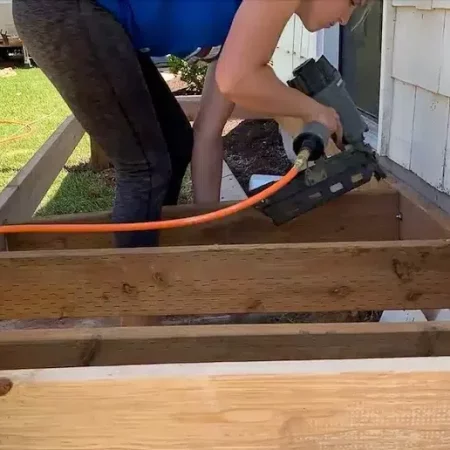

Then I went back and drilled a single joist hanger on the end of each board.

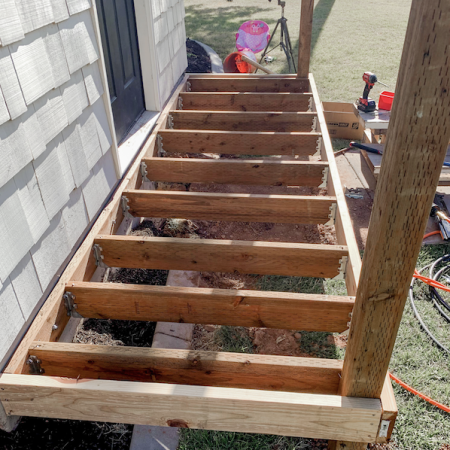
And that’s it folks! This is Part 1 of how I added a simple porch to my existing house. I’ll be posting part 2 soon, so stay tuned.
Are you ready to build something awesome? I created these custom built-ins in this same Hurricane, UT house. They turned out beautiful!
I would love to see any projects you do that were inspired by this one! Be sure to tag me on Instagram so I can see, or just leave me a comment below!
XOXO,
Crystel

